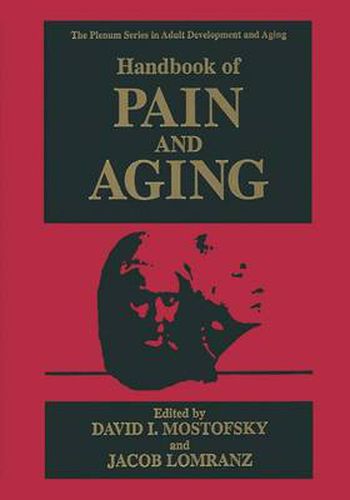Readings Newsletter
Become a Readings Member to make your shopping experience even easier.
Sign in or sign up for free!
You’re not far away from qualifying for FREE standard shipping within Australia
You’ve qualified for FREE standard shipping within Australia
The cart is loading…






This title is printed to order. This book may have been self-published. If so, we cannot guarantee the quality of the content. In the main most books will have gone through the editing process however some may not. We therefore suggest that you be aware of this before ordering this book. If in doubt check either the author or publisher’s details as we are unable to accept any returns unless they are faulty. Please contact us if you have any questions.
From time to time, professional journals and edited volumes devote some of their pages to considerations of pain and aging as they occur among the aged in different cultures and populations. One starts from several reasonable assumptions, among them that aging per se is not a disease process, yet the risk and frequency of disease processes increase with ongoing years. The physical body’s functioning and ability to restore all forms of damage and insult slow down, the immune system becomes compromised, and the slow-growing pathologies reach their critical mass in the later years. The psychological body also becomes weaker, with unfulfilled promises and expectations, and with tragedies that visit individuals and families, and the prospect that whatever worlds remain to be conquered will most certainly not be met with success in the rapidly passing days and years that can only culminate in death. Despair and depression coupled with infirmity and sensory and! or motor inefficiency aggravate both the threshold and the tolerance for discomfort and synergistically collaborate to perpetuate a vicious cycle in which the one may mask the other. Although the clinician is armed with the latest advances in medicine and phar macology, significant improvement continues to elude her or him. The geriatric specialist, all too familiar with such realities, usually can offer little else than a hortative to learn to live with it, but the powers and effectiveness of learning itself have declined.
$9.00 standard shipping within Australia
FREE standard shipping within Australia for orders over $100.00
Express & International shipping calculated at checkout
This title is printed to order. This book may have been self-published. If so, we cannot guarantee the quality of the content. In the main most books will have gone through the editing process however some may not. We therefore suggest that you be aware of this before ordering this book. If in doubt check either the author or publisher’s details as we are unable to accept any returns unless they are faulty. Please contact us if you have any questions.
From time to time, professional journals and edited volumes devote some of their pages to considerations of pain and aging as they occur among the aged in different cultures and populations. One starts from several reasonable assumptions, among them that aging per se is not a disease process, yet the risk and frequency of disease processes increase with ongoing years. The physical body’s functioning and ability to restore all forms of damage and insult slow down, the immune system becomes compromised, and the slow-growing pathologies reach their critical mass in the later years. The psychological body also becomes weaker, with unfulfilled promises and expectations, and with tragedies that visit individuals and families, and the prospect that whatever worlds remain to be conquered will most certainly not be met with success in the rapidly passing days and years that can only culminate in death. Despair and depression coupled with infirmity and sensory and! or motor inefficiency aggravate both the threshold and the tolerance for discomfort and synergistically collaborate to perpetuate a vicious cycle in which the one may mask the other. Although the clinician is armed with the latest advances in medicine and phar macology, significant improvement continues to elude her or him. The geriatric specialist, all too familiar with such realities, usually can offer little else than a hortative to learn to live with it, but the powers and effectiveness of learning itself have declined.